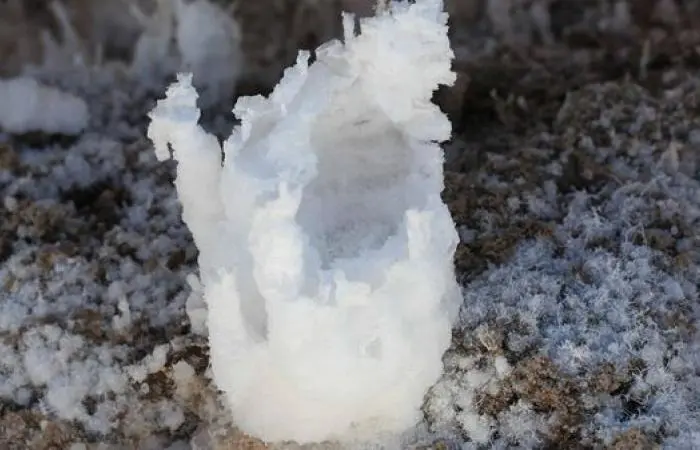! Finding living creatures about 830 million years old trapped in a rock
Scientists have announced an astonishing discovery that shocked many of them and could open the way for a greater understanding of the nature of life on ancient Earth. A team of geologists have discovered tiny remnants of primitive life, a nucleus and algae trapped inside ancient rocks of halite crystals, whose formation dates back to 830 one million years.
And halite rocks are formations of sodium chloride, also known as rock salt, and this discovery enhances the chances of using these formations worldwide to study ancient saline environments and what they contained of various organisms, so that scientists begin to identify the oldest chemical sedimentary rocks that contain microorganisms and confirm It is from the Brown Formation located in Australia.
halite rocks
By using a core sample of the Brown Formation extracted in 1997, a team of geologists led by Sarah Schrader Gomez was able to perform precise examinations using non-invasive optical methods, leaving the sample intact.
Accurate examinations of living organisms
With the presence of living organisms in these rock formations, this unusual study opens the way not only to study ancient life on Earth, but also in outer space. A planet like Mars, with its large salt deposits, will help scientists locate ancient liquid water reservoirs on the planet. Red and see what life looks like it.
Scientists confirmed that when crystals form in salt water, they can hold small amounts of liquids inside them with microorganisms such as bacteria, algae and fungi, in addition to the ability to monitor information about the temperature of the water and its chemicals, down to the temperature of the atmosphere when the mineral was formed.
The scientists used ultraviolet lithography and transmitted light with magnification up to 2000 times to study liquid impurities inside the rocks without breaking them or removing living organisms from them. Inside, they found primitive cells of a nucleus with samples that began to decompose organically and others that have the same characteristics as modern living organisms.
While scientists believed that the radiation would destroy organic matter over long periods of time, they confirmed that the buried Ahalites 250 million years ago were exposed to a small amount of radiation, and that there are rock formations that may be much older than this and contain organisms Membership too.
! Fluids trapped in salt 830 million years ago hold microorganisms — and they may be alive
Scientists rely entirely on visual inspection technology to study biosignatures in ancient rocks to find out the geological context for the formation and growth of those organisms before carrying out further biochemical examinations.
https://amadalamazigh.press.ma/%d8%aa%d9%8a%d9%84%d9%8a%d9%84%d9%8a-%d8%aa%d8%a8%d8%af%d8%b9-%d9%85%d9%86-%d8%ac%d8%af%d9%8a%d8%af-%d8%a8%d8%a3%d9%83%d8%a8%d8%b1-%d8%ac%d8%af%d8%a7%d8%b1%d9%8a%d8%a9-%d8%aa%d8%ad%d9%85%d9%84/?fbclid=IwAR2Xty3TJDdJobBO0zcPaMkkmNoOx5zJgxSJ_-VNJrEoLFCFWK7z1sVW3KA




